The national flower of India, the lotus, holds a revered place in history, culture, and tradition. Scientifically known as Nelumbo nucifera, this aquatic plant belongs to the family Nelumbonaceae. Its broad, vibrant blooms and floating leaves make it an iconic symbol of purity and resilience, deeply intertwined with ancient Indian mythology and religious practices.
Also known by various names such as Chinese Arrowroot, Sacred Lotus, and Egyptian Sacred Bean, the lotus is native to a vast region spanning Asia—stretching from Iran to China, Japan, New Guinea—and parts of northeastern Australia. Its widespread cultural significance across different regions reflects its enduring legacy as a symbol of spirituality, prosperity, and beauty.
From serene ponds to cultural ceremonies, the lotus remains a timeless emblem of nature’s elegance and adaptability.
| Common name | Chinese Arrowroot, Chinese Waterlily, Eastern Lotus, East Indian Lotus, Egyptian Sacred Bean, Indian Lotus, Padma, Sacred Lotus |
| Botanical name | Nelumbo nucifera |
| Family | Nelumbonacea |
| Species | nucifera |
| Origin | Asia (Iran to China, Japan and New Guinea) and NE Australia |
| Life cycle | Annual |
| Plant type | Herbaceous Perennial |
| Hardiness zone | 4, 5, 6, 7, 8, 9, 10 |
| Sunlight | Full Sun |
| Maintenance | Low |
| Soil condition | High Organic Matter |
| Drainage | Occasionally Wet |
| Flowering period | Summer |
| Height | 3 ft. – 6 ft. |
| Flower color | Pink |
| Leaf color | Green |
| Fruit color | Brown, Copper |
| Fruit benefit | Edible |
| Leaf benefit | Edible |
| Flower benefit | Fragrant |
| Garden style | Rain Garden |
| Uses | Container |
I. Appearance and Characteristics
The lotus (Nelumbo nucifera), commonly referred to as the sacred lotus, Indian lotus, or simply lotus, is an aquatic plant from the family Nelumbonaceae. Though often confused with water lilies, the lotus is distinct in structure and belongs to a different botanical family.
Roots and Leaves
The lotus roots grow firmly in the soil at the bottom of ponds, lakes, or slow-moving rivers. Its large, rounded leaves either float on the water’s surface or rise well above it on sturdy stalks. These leaf stalks, or petioles, can grow up to 200 cm (6 ft 7 in) in length, enabling the plant to thrive in deep water. The leaf blades, or laminas, have a horizontal spread that can reach up to 1 meter (3 ft 3 in), with some leaves growing as large as 80 cm (31 in) in diameter.
Flowers
Lotus flowers grow on thick stems that extend several centimeters above the leaves. These blossoms are striking, often reaching up to 35 cm (14 in) in diameter.
Cultivated varieties can have an extraordinary number of petals. For instance, the Chinese variety Qian Ban Lian (“Thousand Petals Lotus”) can have 3,000 to 4,000 petals per bloom, while the Japanese variety Ohmi Myoren (“Strange Lotus”) boasts between 2,000 and 5,000 petals—the highest petal count recorded for any plant species.
The lotus has a remarkable ability to regulate its flower temperature, maintaining a range of 30–35°C (86–95°F), even when the surrounding air temperature drops significantly. Studies suggest that this thermoregulation helps attract cold-blooded pollinators.
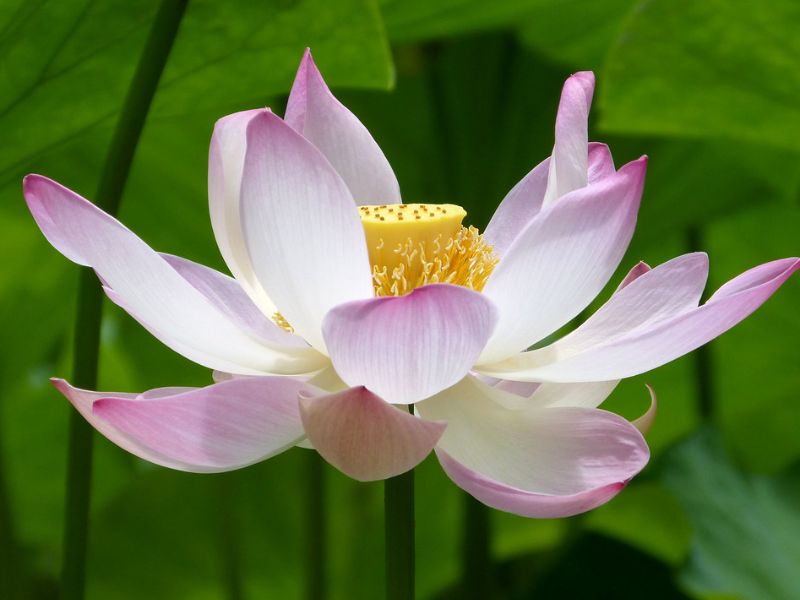
Seeds
A fertilized lotus flower produces a fruit that contains 10 to 30 seeds. These seeds are ovoid in shape, measuring 1–2.5 cm wide and 1–1.5 cm long, with a brownish outer coat. Lotus seeds are known for their incredible longevity and can remain viable for centuries. In 1994, researchers successfully germinated a sacred lotus seed that was estimated to be 1,300 years old.
Additional Notes
Though only distantly related to water lilies (Nymphaea caerulea), the lotus shares similar chemical properties. Both plants contain the alkaloids nuciferine and aporphine. In 2013, the genome of the sacred lotus was fully sequenced, shedding light on its unique traits, including its ability to repair damaged DNA and resist aging.
II. How to Grow and Care
Sunlight
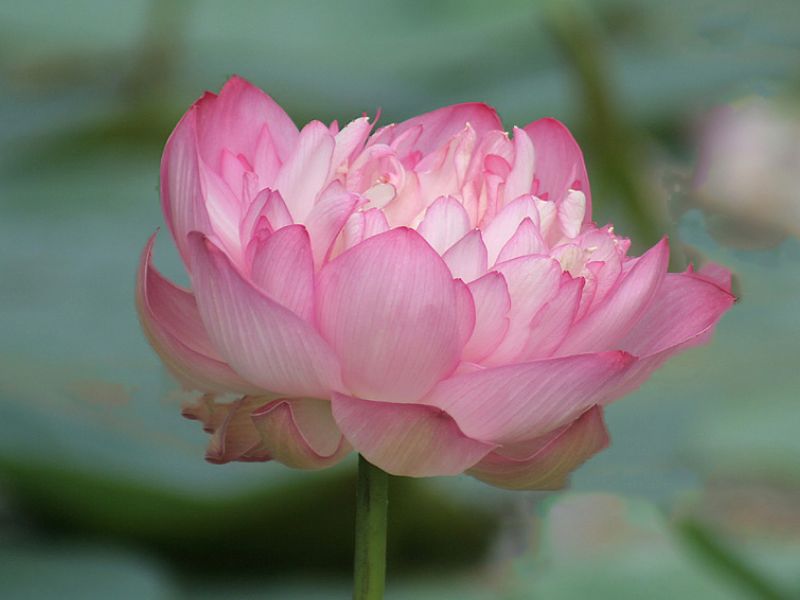
The lotus thrives in full sun and requires at least 6 hours of direct sunlight daily for healthy growth and abundant blooms. Choose a location with ample sunlight, whether in a garden pond or container.
Watering
When growing lotus in pots or bowls, maintain the water level around 5 cm (2 inches) above the soil surface. Ensure that the leaves remain above the water and are not fully submerged. Regular tap water works well for lotus plants—avoid using chlorinated or chemically treated water if possible.
Fertilizing
Fertilize your lotus once a year, ideally in the winter months between December and January. Use slow-release fertilizer designed for aquatic plants or specialized lotus fertilizer satchels. Gently push the fertilizer satchel into the soil near the container’s edge until it reaches the bottom.
Repotting
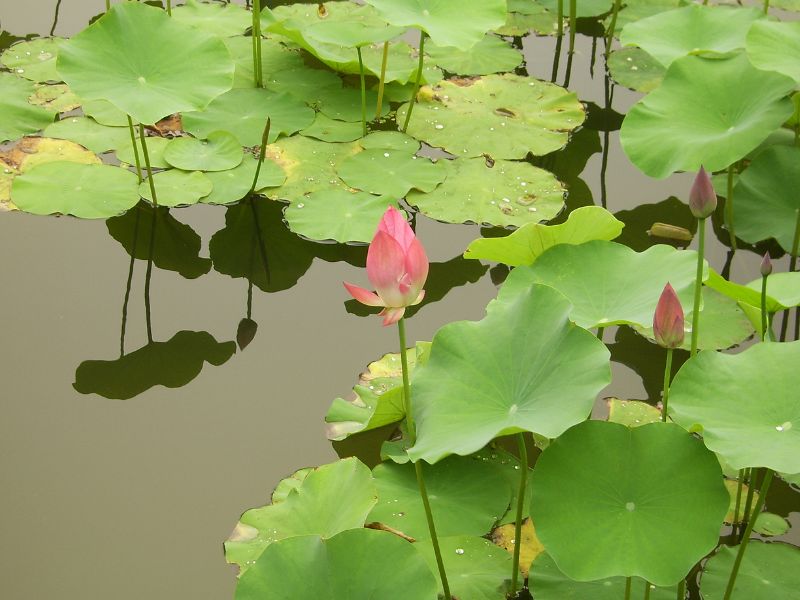
Lotus plants need ample space to grow. After purchasing a lotus, repot it into a larger container to support healthy root development.
- For smaller varieties, choose a pot or bowl at least 40 cm (16 inches) wide and 20 cm (8 inches) deep.
- For larger varieties, opt for containers at least 80 cm (31 inches) wide and 30 cm (12 inches) deep.
Steps for Repotting:
- Carefully remove the lotus from its nursery pot, avoiding damage to the roots.
- Place the plant in the center of the new pot or bowl.
- Fill the container with topsoil (regular garden soil works well), covering about one-third of the container. Avoid using potting mix, as it can make the water murky.
- Add a 3 cm (1 inch) layer of pea gravel on top of the soil to help keep the soil in place.
- Slowly fill the container with water, ensuring that the leaves remain above the water level to allow for proper growth.
III. Uses and Benefits
Culinary uses
- Rhizomes
The rhizomes of lotus (Chinese: 蓮藕; pinyin: lián-ǒu, Japanese: 蓮根, romanized: renkon, Korean: 연군 or 蓮根, romanized: yeongun, Hindi: कमल ककड़ी, romanized: kamal kakdi, Telugu: అల్లిదుంప, romanized: alli’dumpa) are consumed as a vegetable in Asian countries, extensively in China, Japan, and India, sold whole or in cut pieces, fresh, frozen, or canned. They are fried or cooked mostly in soups, soaked in syrup or pickled in vinegar (with sugar, chili and garlic). Lotus rhizomes have a crunchy texture and are a classic dish at many banquets, where they are deep-fried, stir-fried, or stuffed with meats or preserved fruits. Salads with prawns, sesame oil or coriander leaves are also popular. Fresh lotus root slices are limited by a fast browning rate. Lotus root tea is consumed in Korea.
Lotus root is a popular vegetable in Sri Lanka, where it is often cooked in coconut milk gravy. In India, lotus root (also known as kamal kakdi in Hindi) is cooked as a dry curry or sabzi.
Japan is one of the primary users of the rhizomes, representing about 1% of all vegetables consumed. Japan grows its own lotus but still must import 18,000 tons of lotus rhizome each year, of which China provides 15,000 tons yearly.
Rhizomes contain high amounts of starch (31.2%) without characteristic taste or odor. The texture is comparable to a raw potato. The binding and disintegration properties of isolated Nelumbo starch have been compared with maize and potato starch; Nelumbo starch is shown to be superior as an adjuvant in the preparation of tablets. When dried, N. nucifera is also made into flour, another popular use of this vegetable.
- Pips
Lotus pip tea is consumed in Korea.
The rhizomes of lotus (Chinese: 蓮藕; pinyin: lián-ǒu, Japanese: 蓮根, romanized: renkon, Korean: 연군 or 蓮根, romanized: yeongun, Hindi: कमल ककड़ी, romanized: kamal kakdi, Telugu: అల్లిదుంప, romanized: alli’dumpa) are consumed as a vegetable in Asian countries, extensively in China, Japan, and India, sold whole or in cut pieces, fresh, frozen, or canned. They are fried or cooked mostly in soups, soaked in syrup or pickled in vinegar (with sugar, chili and garlic). Lotus rhizomes have a crunchy texture and are a classic dish at many banquets, where they are deep-fried, stir-fried, or stuffed with meats or preserved fruits. Salads with prawns, sesame oil or coriander leaves are also popular. Fresh lotus root slices are limited by a fast browning rate. Lotus root tea is consumed in Korea.
Lotus root is a popular vegetable in Sri Lanka, where it is often cooked in coconut milk gravy. In India, lotus root (also known as kamal kakdi in Hindi) is cooked as a dry curry or sabzi.
Japan is one of the primary users of the rhizomes, representing about 1% of all vegetables consumed. Japan grows its own lotus but still must import 18,000 tons of lotus rhizome each year, of which China provides 15,000 tons yearly.
Rhizomes contain high amounts of starch (31.2%) without characteristic taste or odor. The texture is comparable to a raw potato. The binding and disintegration properties of isolated Nelumbo starch have been compared with maize and potato starch; Nelumbo starch is shown to be superior as an adjuvant in the preparation of tablets. When dried, N. nucifera is also made into flour, another popular use of this vegetable.
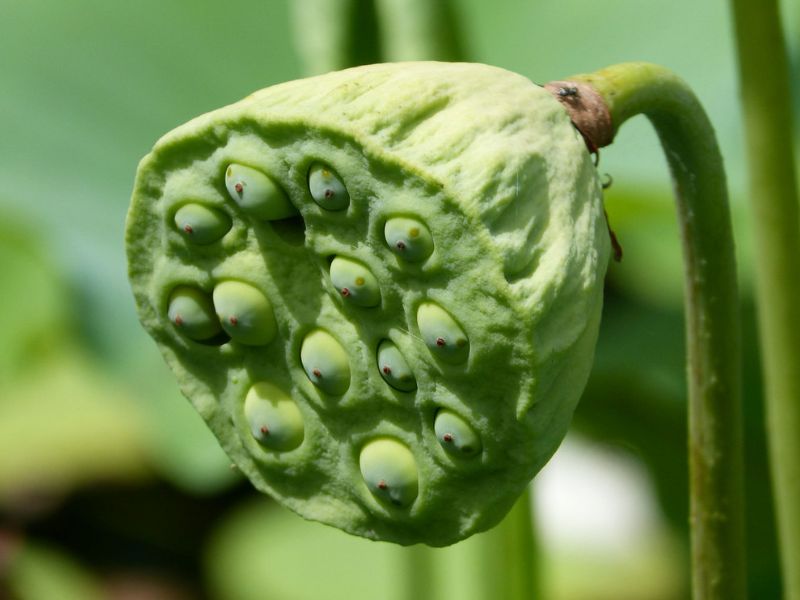
- Seeds
Fresh lotus seeds (simplified Chinese: 莲子; traditional Chinese: 蓮子; pinyin: liánzǐ; Cantonese Yale: lìhnjí) are nutritious but also vulnerable to microbial contamination, especially fungal infections. Therefore, mostly dry lotus seed-based products are found on the market. Traditional sun baking combined with charcoal processing dries the seeds but results in a loss of nutrients. Freeze-dried lotus seeds have a longer shelf life and maintain original nutrients, while no differences in flavour are found after rehydration compared to fresh lotus seeds.
Dry stored lotus seeds are sensitive to moisture and mold infestation; researchers continue to explore new ways to preserve fresh lotus seeds, such as radiation processing.
Lotus seeds can be processed into moon cake, lotus seed noodles and food in the forms of paste, fermented milk, rice wine, ice cream, popcorn (phool makhana), and others, with lotus seeds as the main raw material. Traditional Chinese medicine claims that fresh lotus seed wine has thirst-quenching, spleen-healing, and anti-diarrheal advantages after drinking, attributed to unspecified bioactive compounds. Lotus seed tea is consumed in Korea, and lotus embryo tea is consumed in China and Vietnam.
- Stems
Young lotus stems are used as a salad ingredient in Vietnamese cuisine and as a vegetable ingredient for some soup and curry in Thailand, such as keang som sai bua (Thai: แกงส้มสายบัว, lotus stem sour soup) and keang kati sai bua (แกงกะทิสายบัว, lotus stem in coconut milk curry).
In northern and eastern regions of India, the stalk of the flower is used to prepare a soup, kamal gatte ki sabji (Hindi: कमल गट्टे की सब्जी) and an appetizer, kamal kakdi pakode (Hindi: कमल ककडी पकौडे). In South Indian states, the lotus stem is sliced, marinated with salt to dry, and the dried slices are fried and used as a side dish. In Kerala (Malayalam: താമര) and Tamil Nadu, this end product is called thamara vathal.
In the Philippines, an indigenous variety called tukal is used as the main ingredient in dishes with coconut milk. The stems and petals can be bought in markets when in season.
- Leaves
In China and Korea, lotus leaf tea (Korean: 연잎차, romanized: yeon’ip-cha) is made from the leaves of the lotus. It is also used as a wrap for steaming rice and sticky rice and other steamed dishes in Southeast Asian cuisine, such as lo mai gai in Chinese cuisine or kao hor bai bua (Thai: ข้าวห่อใบบัว), fried rice wrapped in lotus leaf in Thai cuisine.
Vietnamese also use lotus leaves to wrap green young rice, cốm, which is eaten in autumn. The leaves impart a unique scent to the soft, moist rice.
- Flowers
In Korea, lotus flower tea (Korean: 연꽃차, romanized: yeon’kkot-cha) is made from the dried petals of the white lotus.
The stamens can be dried and made into a fragrant herbal tea (Chinese: 蓮花茶; pinyin: liánhuā cha; Cantonese Yale: lìhnfāa chah), or used to impart a scent to tea leaves (particularly in Vietnam). This Vietnamese lotus tea is called trà sen, chè sen, or chè ướp sen.
- Risks
The petals, leaves, and rhizome can also all be eaten raw, but there is a risk of parasite transmission (e.g., Fasciolopsis buski): it is therefore recommended that they be cooked before eating.
Medicinal uses
The Indian National Flower provides a variety of medicinal benefits when used in herbal therapy.
- The lotus tea made up of the flower is used to treat heart problems. Additionally, its purifying qualities halt blood flow in wounds.
- The gastrointestinal system and reproductive systems benefit from the lotus root.
- It encourages the baby’s natural development when the mother is pregnant.
- Numerous health issues, including throat problems and skin discoloration, are treated with the lotus root. Additionally, it’s used to treat conditions including diarrhea and smallpox. The kidneys and spleen enjoy the lotus seed.
Use in water treatment
Nelumbo nucifera shows high potential for usage in wastewater treatment removing polluting compounds and heavy metals. It is able to grow in variable water conditions and in low light intensity. Various studies show the successful use of N. nucifera to counteract water eutrophication. The leaves of the floating lotus reduce sunlight reaching the lower part of the water. This suppresses algae growth in N. nucifera aquatic systems and thus, the oxygen content is up to 20% higher than in other aquatic plant systems. Due to intense agricultural practices, nitrogen and phosphorus pollution are major problems in aquatic systems.
N. nucifera is able to assimilate a higher content of phosphorus than aquatic plants currently used for water remediation (such as water hyacinth). It also assimilates nitrogen (“denitrification”) and creates a habitat for bacterial growth in the water body. Through rhizofiltration, heavy metals – including arsenic, copper, and cadmium – can be removed efficiently from the water. The results observed are impressive showing 96% of copper and 85% cadmium metals removed after a seven-day incubation period. The accumulation of heavy metals doesn’t show morphological symptoms of metal toxicity; however, the rhizome quality for human consumption needs further study..
Use in bioengineering
Nelumbo nucifera contains some thermal-stable proteins that might be useful in protein bioengineering processes. The proteins are characterized by seed longevity used for cell protection and repair under stress. There are also several indications that compounds of N. nucifera are used in drug fabrication in human health research for multiple purposes. Lotus leaves possess hydrophobic characteristics, attributed to a waxy coat that prevents water from adhering to the surface. This attribute has influenced the conception of the “lotus effect” in biomimicry and engineering, guiding the design of materials that resist water and remain self-cleaning. Researchers at the National University of Singapore have utilized the water-repelling structure as inspiration for developing eAir, an aero-elastic sensor capable of detecting subtle pressure changes or other environmental stimuli.
Other uses
The distinctive dried seed heads, which resemble the spouts of watering cans, are widely sold throughout the world for decorative purposes and for dried flower arranging.
In Asia, the petals are sometimes used for garnish, while the large leaves are used as a wrap for food, not frequently eaten (for example, as a wrapper for zongzi). Lotus leaves are also used to serve food in various cultures.
A unique fabric called lotus silk, from the lotus plant fibers, is produced only at Inle Lake, Myanmar, and in Siem Reap, Cambodia. This thread is used for weaving special robes for Buddha images called kya thingan (lotus robe).
IV. Harvesting and Storage
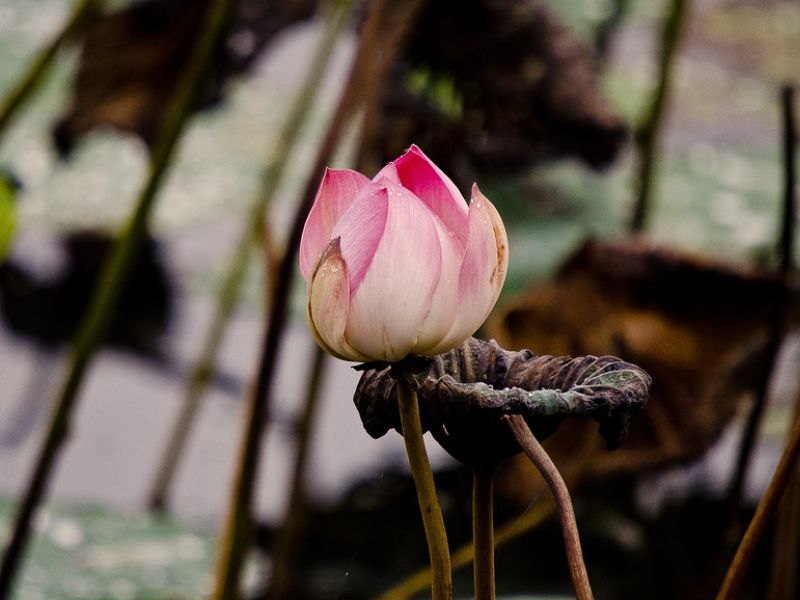
The stolon is ready to harvest two to three months after planting. It must be harvested before flowering. Harvesting the stolon is done by manual labor. For this step, the field is not drained. The stolon is pulled out of the water by pulling and shaking the young leaves in the shallow water.
The first leaves and flowers can be harvested three months after planting. Flowers can be picked every two days during summer and every three days during the colder season. Four months after planting, the production of flowers has its climax. The harvest of flowers is usually done by hand for three to four months.
Seeds and seed pods can be harvested when they turn black four to eight months after planting. After sun drying for two to three days, they are processed by mechanical tools to separate seed coats and embryos.
The rhizomes mature to a suitable stage for eating in approximately six to nine months. Early varieties are harvested in July until September and late varieties from October until March, after the ponds or fields are drained. The large, starch-rich rhizomes are easy to dig out of the drained soil. In small-scale production, they are harvested by hand using fork-like tools. In Japan and on bigger farms, manual labor harvesting is fully replaced by machines.
Find Where to Buy the Best Sacred Lotus (Nelumbo nucifera)







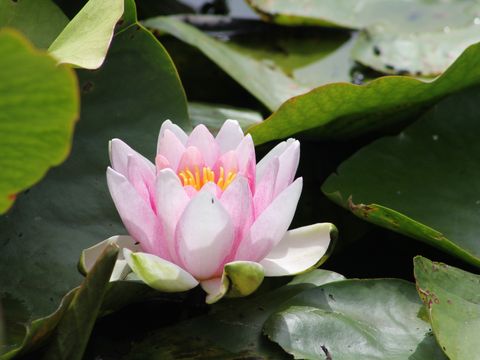
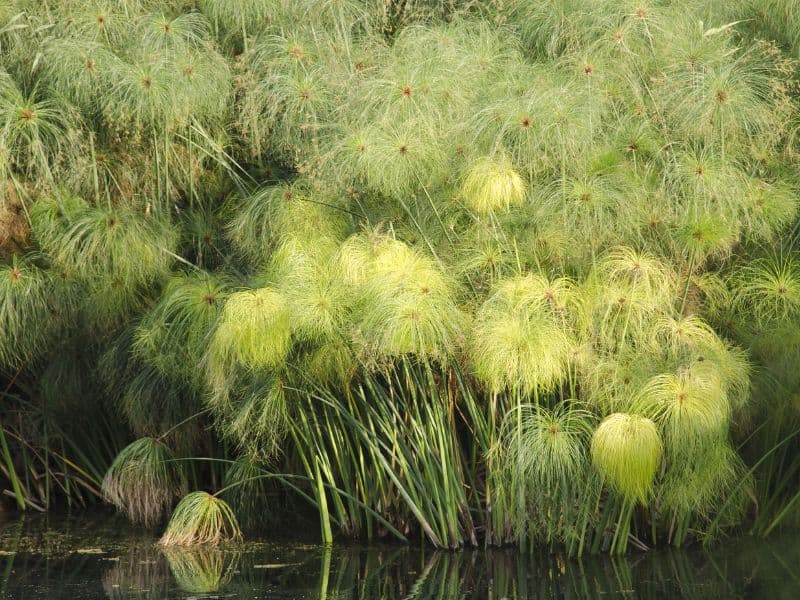
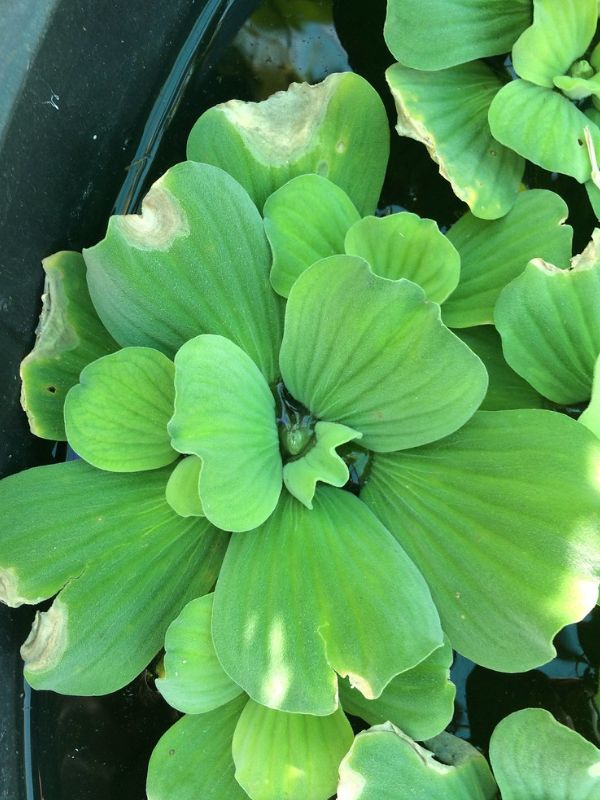
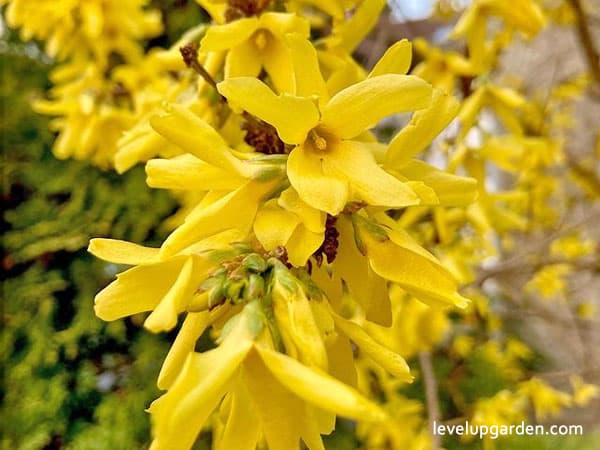





Leave a Reply